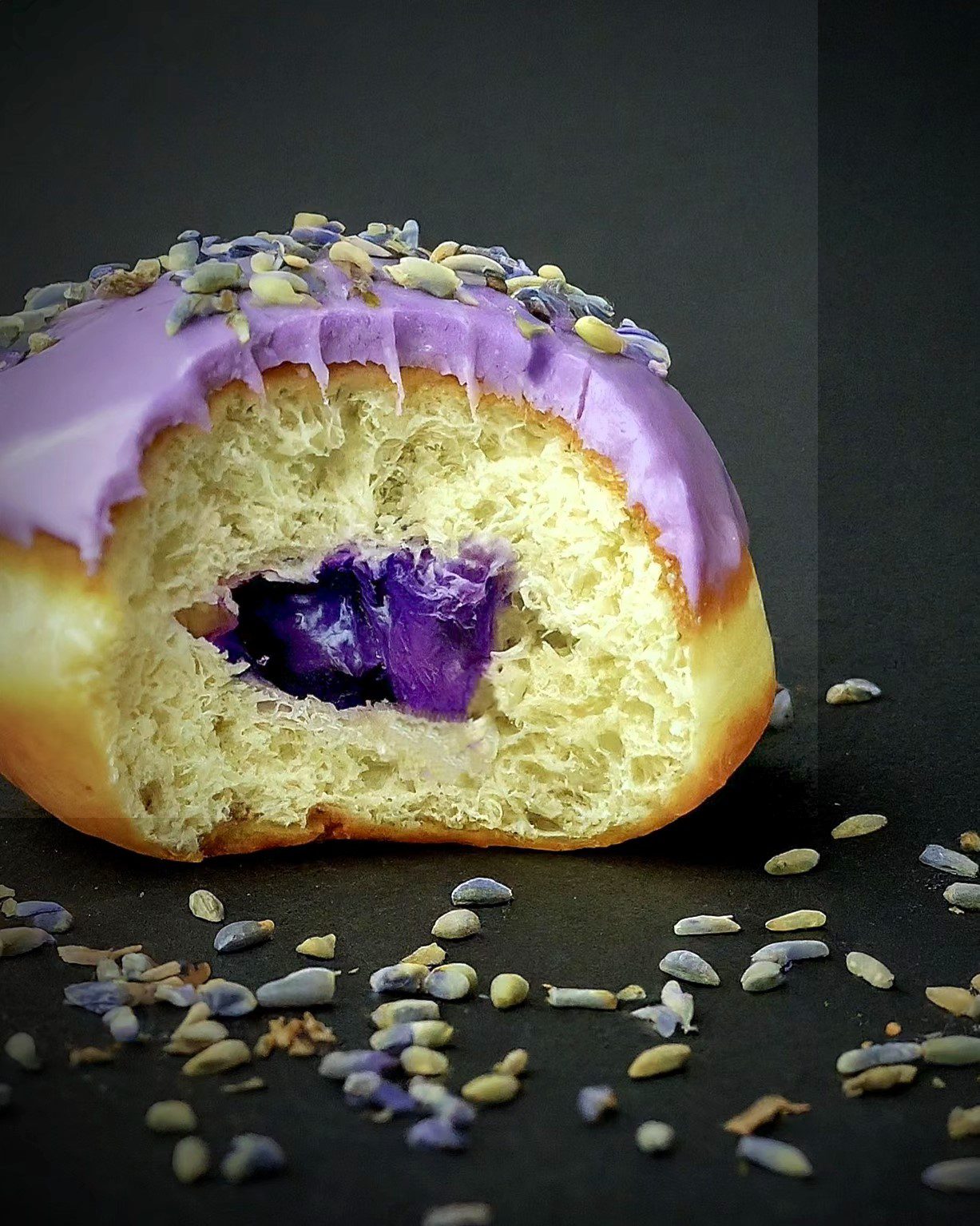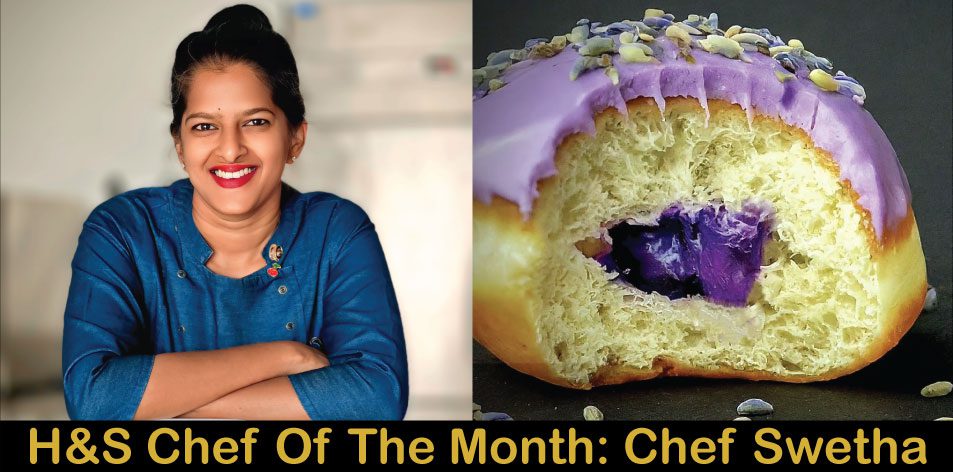H&S Chef Of The Month
Chef Swetha
Nationality: Indian
Interview With H&S Magazine
Who Is Swetha?
I’m Swetha & I’m currently working as the Head Chef for Compass Group Australia. My culinary journey started in Bangalore, where I completed my Bachelor’s in Hospitality Management, followed by a Master’s in European Cuisine & Pâtisserie from César Ritz Culinary Institute in Switzerland.
I was honoured to become the youngest female Executive Chef in India at 25, and since then, I’ve led diverse culinary teams, developed innovative menus across Indian, Western, and Pan-Asian cuisines, and worked on large-scale operations as well as R&D projects.
Relocating to Sydney has given me a fresh perspective on multicultural food landscapes, and I’m excited to continue growing as a leader while staying hands-on in the kitchen. I believe in blending creativity with operational excellence, and I’m passionate about mentoring young chefs and constantly evolving with global culinary trends.
Type Of Cuisine?
My culinary style is globally inspired but deeply rooted in honest, ingredient-forward cooking. I specialize in Indian, Western, and Pan-Asian cuisines, with a strong foundation in European techniques—thanks to my training in Switzerland.
Among these, I have a special love for Indian regional cuisine, not just because it’s part of my heritage, but because of its depth, diversity, and emotional connection with people. I enjoy reimagining traditional Indian dishes with modern plating, international influences, or unexpected textures, while still respecting the original soul of the dish
At the same time, I’m drawn to European and Pan-Asian styles for their technique-driven approach, balance, and aesthetic. I believe every cuisine has a story, and I love using food as a medium to tell those stories in a fresh, memorable way. My focus is always on harmony—flavour, texture, nutrition, and visual appeal—all coming together on a plate.
What Inspired You To Become A Chef?
From a very young age, I found myself drawn to the kitchen—not just for the act of cooking, but for the way food could bring people together, tell stories, and express emotion. I grew up watching how a simple meal could spark joy, create connection, and leave a lasting memory. That emotional power of food inspired me deeply.
As I pursued my education, I realized that culinary arts offered the perfect blend of creativity, discipline, and leadership. What started as passion soon became purpose—especially when I saw how much impact a chef can have, not just in a kitchen, but in shaping culture, mentoring talent, and driving innovation.
Becoming the youngest female Executive Chef in India gave me the confidence to break norms and create my own path. Today, what continues to inspire me is the opportunity to constantly learn, evolve, and leave a mark—one plate, one team, and one idea at a time.
What Is The Biggest Challenge You Have Faced In The Culinary Industry?
One of the biggest challenges I’ve faced in the culinary industry is overcoming the traditional barriers around gender and age, especially early in my career as a young female chef in India. The kitchen can be a tough environment, often dominated by rigid hierarchies and expectations, which sometimes made it difficult to be taken seriously or have my ideas heard.
However, I embraced this challenge as an opportunity to prove myself through consistent hard work, professionalism, and delivering results. Becoming the youngest female Executive Chef in India was a milestone that not only validated my skills but also helped break stereotypes.
Another ongoing challenge is balancing innovation with operational efficiency, especially in large-scale food service settings. It requires creativity, clear communication, and strong leadership to keep teams motivated while delivering quality consistently.
Facing these challenges has made me more adaptable, confident, and committed to mentoring others, ensuring that kitchens become more inclusive and collaborative spaces.
What’s Your Biggest Achievement In The Culinary Industry?
One of my biggest achievements was becoming the youngest female Executive Chef in India at the age of 25. This milestone was not just a personal victory but a testament to my dedication, skill, and perseverance in a highly competitive and traditionally male-dominated industry.
Leading large culinary teams and managing complex operations at a young age taught me invaluable lessons in leadership, innovation, and resilience. It also opened doors for me to influence culinary trends, mentor aspiring chefs, and contribute to the growth of the organizations I’ve been part of.
This achievement motivates me every day to keep pushing boundaries, continuously learn, and inspire others—especially young generation—who aspire to build a career in the culinary arts.
When It comes To Cooking, What Is More Important To You, The Technique, The Ingredients Or The Creativity?
For me, cooking is a harmonious blend of technique, ingredients, and creativity—each equally important and interconnected.
Technique is the foundation; without proper skills and understanding of cooking methods, it’s difficult to execute dishes consistently and at a high standard. It ensures that flavours develop correctly and textures are perfect.
Ingredients are the heart of any dish. Using fresh, high-quality ingredients allows the natural flavours to shine and shows respect for the food and the people eating it. The best technique can’t fix poor ingredients.
Creativity is what brings a dish to life and makes it memorable. It’s about telling a story through food, innovating, and giving diners an experience beyond just taste.
Ultimately, I believe that the best cooking happens when these three elements come together seamlessly—solid technique to handle ingredients at their best, combined with creativity to surprise and delight.
Recipe Of The Week: Lavender Bomboloni (Italian Doughnuts With Lavender Cream)

The Bomboloni
Ingredients:
• 3½ cups (440g) all-purpose flour
• ¼ cup (50g) caster sugar
• 2¼ tsp (1 packet) active dry yeast
• ½ tsp salt
• ¾ cup (180ml) warm milk
• 2 eggs (room temp)
• 60g unsalted butter, softened
• Zest of 1 lemon (optional)
• Oil, for deep-frying
• Granulated sugar, for coating
The Lavender Pastry Cream
Ingredients:
• 2 cups (500ml) whole milk
• 2 tsp culinary dried lavender buds
• 4 egg yolks
• ½ cup (100g) sugar
• 3 Tbsp cornstarch
• 1 Tbsp unsalted butter
• ½ tsp vanilla extract
The Lavender Milk Infusion
Ingredients:
• 3 tbsp milk
• Few lavender buds
The Lavender Frosting (Glaze Style)
Ingredients:
• 1 cup (120g) icing sugar (powdered sugar), sifted
• 2–3 tbsp milk or cream (adjust for consistency)
• ½ tsp vanilla extract
• ½ tsp culinary lavender buds (dried)
• A tiny drop of purple gel food colour (optional)
• ½ tsp honey (optional: adds a beautiful sheen)
The Garnish
Ingredients:
• Few lavender petals or edible dried flowers
Preparation: The Bomboloni
In a bowl, prepare the dough by combining the warm milk, yeast & 1 tbsp sugar, then let it sit for 5–10 mins until foamy. In a stand mixer bowl (or by hand), combine the flour, remaining sugar, salt, lemon zest, then add the eggs and yeast mixture & knead dough for 2 mins, then add butter gradually & knead for 7–8 mins until smooth and elastic. Cover and let rise in a warm place for 1–1.5 hours, or until doubled. Once doubled, punch down the dough & roll out on a floured surface to about ½ inch thickness, then cut into rounds using a 2.5–3 inch cutter & place on floured tray, cover lightly, and proof for 30–45 mins. Heat oil in a deep pan to 170–180°C (340–350°F) & fry 2–3 at a time until golden brown, about 2 mins per side, drain on paper towels, then roll in granulated sugar while warm.
Preparation: The Lavender Pastry Cream
Heat milk & lavender in a saucepan until it just starts to simmer, then turn off the heat, cover, and steep for 15–20 minutes. Next, strain out the lavender buds. In a bowl, whisk yolks, sugar & cornstarch until pale, then slowly add lavender milk to yolk mixture while whisking & return mixture to pan, cook on medium heat, whisking constantly until thick. Remove from heat, stir in butter and vanilla & cover with plastic wrap (touching surface) and chill until firm. Transfer lavender cream to a piping bag with a round nozzle, poke a small hole in the side of each bomboloni and pipe in cream generously.
Preparation: The Lavender Milk Infusion
Warm the milk with lavender buds (don’t boil) & let steep for 15 mins then strain and cool. Use this infused milk to mix the glaze.
Preparation: The Lavender Frosting (Glaze Style)
Plating
Place the bomboloni on the plate & garnish with a few lavender petals or edible dried flowers, before serving.


